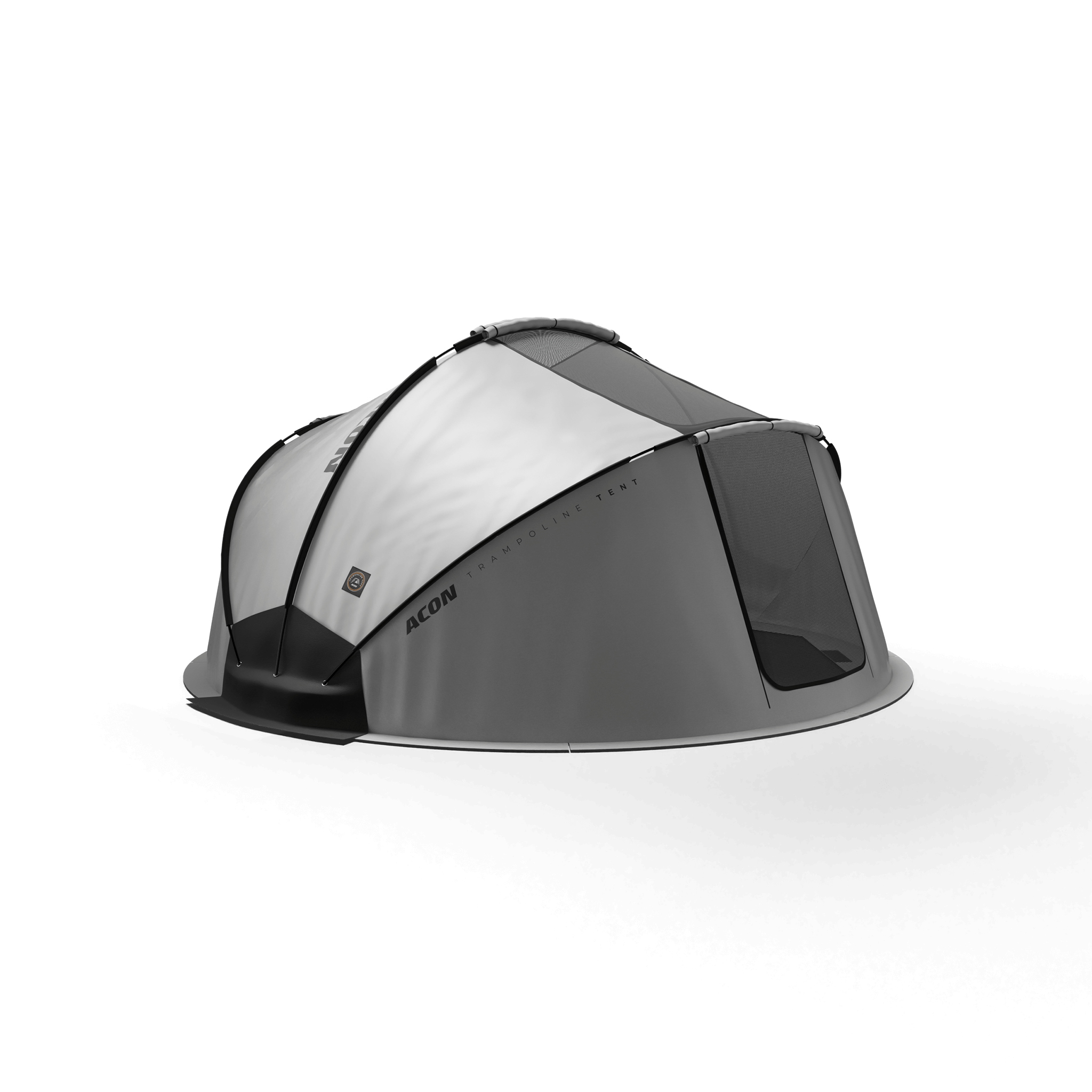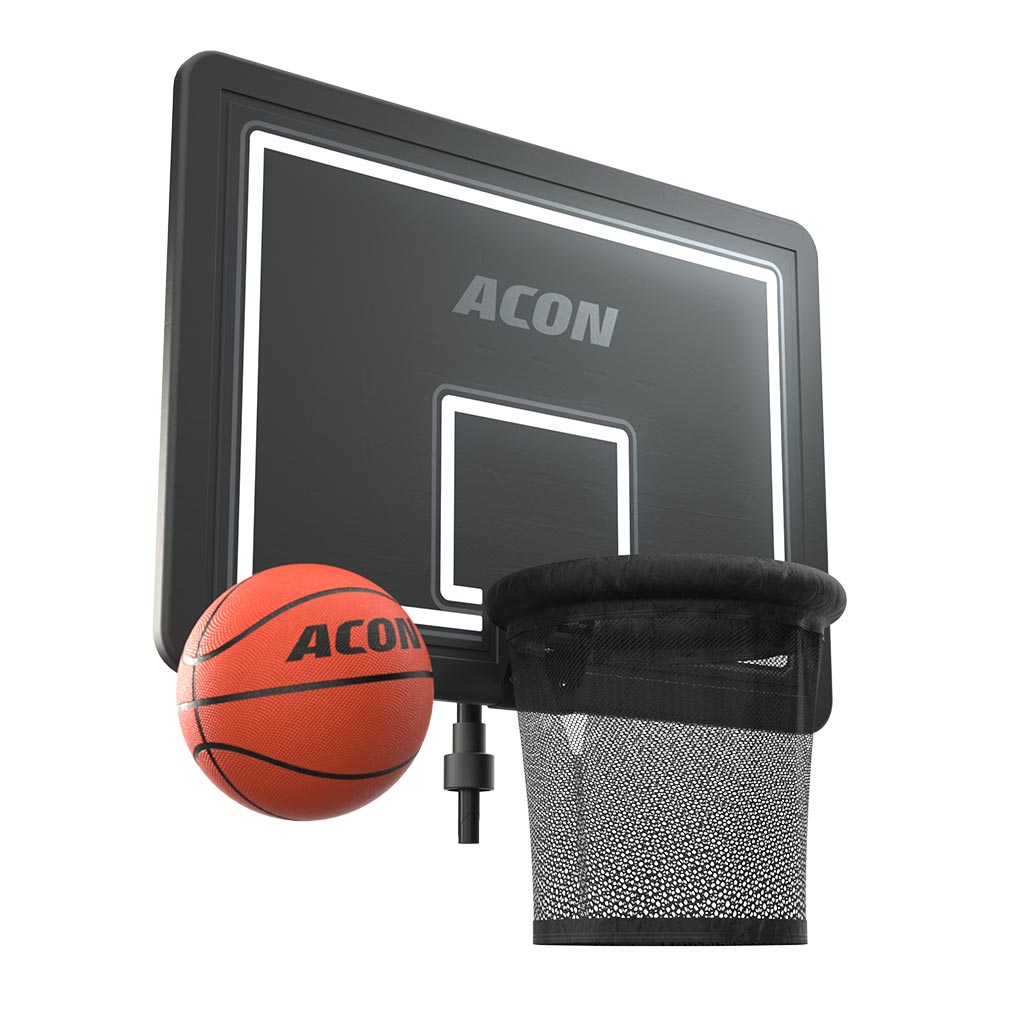Distributacon Inc.
1250 Wayzata Blvd E Unit 1127,
Wayzata, MN 55391, USA
Imagine a school where students don’t spend their break scrolling their phones, but instead channel their energy into jumping on a trampoline, playing games, or building something together. At Kaakkuri School, this is part of everyday life. Kaakkuri School is a comprehensive school located in Oulu, northern Finland. It serves approximately 800 students in grades 1 through 9, covering the entire Finnish basic education system. In Finland, basic education combines primary and lower secondary levels in one school, typically for students aged 7 to 16. This unified model encourages continuity, community, and interaction across age groups.
Students were asked to come up with ideas for improving break activities, and one request stood out above all: a trampoline. Not just any trampoline, but the ACON Air 16 Sport HD, known among youth for its durability and quality. The trampoline was just the beginning—students also enjoy ping pong tables, an interactive iWall game, RunBeat, a fitness room, and even a LEGO table in the school’s indoor and outdoor areas.
The driving idea behind all of this? To offer fun, movement-based alternatives to screen time.
This approach also reflects a wider change happening in Finland. In spring 2025, the Finnish Parliament approved a new law limiting mobile phone use during the school day. Starting in August, students can only use phones in class for learning or health-related reasons and only with a teacher’s or principal’s permission. Schools must also create clear rules for where and how phones are stored during the day. The idea is simple: fewer distractions, better focus, and more opportunities for meaningful interaction.
Headteachers Matti Ahola and Samuli Sorvari recall how it all started. “We wanted to reduce phone use even before national regulations changed, and to offer meaningful alternatives. The trampoline was the top request from the students, and they knew right away that ACON would be the best choice,” they say.
The Best Part of the Break

Thirteen-year-olds Joona and Tatu were among the first to try the new trampoline. “I wanted to test it right away,” Joona laughs. Now, the trampoline is a part of their daily school life. “We jump on it every break,” they say together.
They’ve mastered quite a few tricks: Joona’s favorites are the double full and double kaboom, while Tatu prefers double backflips and frontflips. “At least we’re getting some exercise,” Tatu grins.
But the trampoline is more than just a platform for tricks. It’s a place where friendships are built. “We weren’t friends before the trampoline, but once it arrived, we became close,” Joona says. Tatu nods: “I’ve made a few new friends from other classes too.”
Creating Connection Across All Age Groups

The effects of the trampoline have been visible right away: students move more during breaks, they are more focused in class, and there are fewer conflicts at breaks. “When students can burn off energy on the trampoline or in the gym, it helps them concentrate better in lessons,” says Ahola.
The trampoline has transformed the school atmosphere. “There’s a line for the trampoline every break. Because the students wanted it, they really value it. It’s brought a strong sense of community,” the principals say.
One moment stands out in Ahola's memory. “I saw a shy second-grade boy waiting in line with eighth graders. When his turn came, he did a few simple seat drops. The older students burst into applause. You could see his confidence grow instantly in that moment. That’s what community looks like at its best.”
Less Screen Time, More Movement
The trampoline is part of a bigger effort to encourage phone-free breaks. “We offer multiple engaging activities alongside the trampoline. When students have something fun to do, they forget about their phones and start moving,” Sorvari explains.
The students have noticed the difference too. “We don’t really use our phones anymore. If you like jumping, you’re on the trampoline or doing other activities,” says Tatu.
Though there’s no official research yet, teachers report that students are calmer and more focused in class after active breaks. “When they can use their energy during break, they’re more present in lessons,” Ahola summarizes.
Safety Comes First

Safety is taken seriously. “Only one student is allowed on the trampoline at a time. There’s always supervision. If the rules aren’t followed, we close the trampoline temporarily,” says Ahola. The trampoline is placed in a secured courtyard behind locked doors, which helps with oversight.
At Kaakkuri, safety is more than a rulebook. It's part of how students are taught to care for themselves and each other. “The students understand that if the rules aren’t followed, the trampoline might be closed for a while. That alone motivates them to stick to the shared guidelines,” says Ahola.
Joona and Tatu are just as thoughtful. “It would be great if we had a throw mat,” they suggest, knowing it would help them practice new tricks with more confidence and less risk. For them, safety isn't just about following rules—it's about understanding your own skill level and using the right equipment to grow safely.
A Message from Kaakkuri: Listen to the Kids
Kaakkuri School encourages others to consider similar initiatives. The key is student involvement. “The most important thing is to find the right location and ensure supervision. Our courtyard is perfect. When kids are involved in the decision-making, their engagement and joy follow naturally,” says Sorvari.
That student enthusiasm is easy to hear. “We got really excited about the trampoline. It’s fun if there are people at school who love jumping,” Joona and Tatu say. They’ve noticed more shared activities, new friendships, and supportive energy during breaks.
Ahola and Sorvari summarize it this way: “When students see that their opinions shape everyday life at school, they stick to shared rules and feel valued. That’s a lesson every school can benefit from.”
A Note for Parents: It’s About More Than Grades
As parents, we want more than good grades for our kids—we want them to feel well, thrive, and experience success. The trampoline at Kaakkuri School is a concrete example of how small decisions can have a deep impact. It brings joy through movement, courage to try new things, and experiences that no test score can measure.
When your child comes home excited about new tricks, new friends, or a great recess, you know the school is doing something right. These moments say more than a report card ever could, they say your child feels safe, happy, and supported.
“The ACON X is the best trampoline in the world,” Joona says with a grin. Maybe that’s the whole point: when kids discover the joy of movement and shared play, it becomes an investment that pays off far into the future.
Kaakkuri School shows us that when children are given the chance to move, connect, and grow together, big things can happen. Sometimes, a single trampoline can transform recess and the entire school day for the better.











